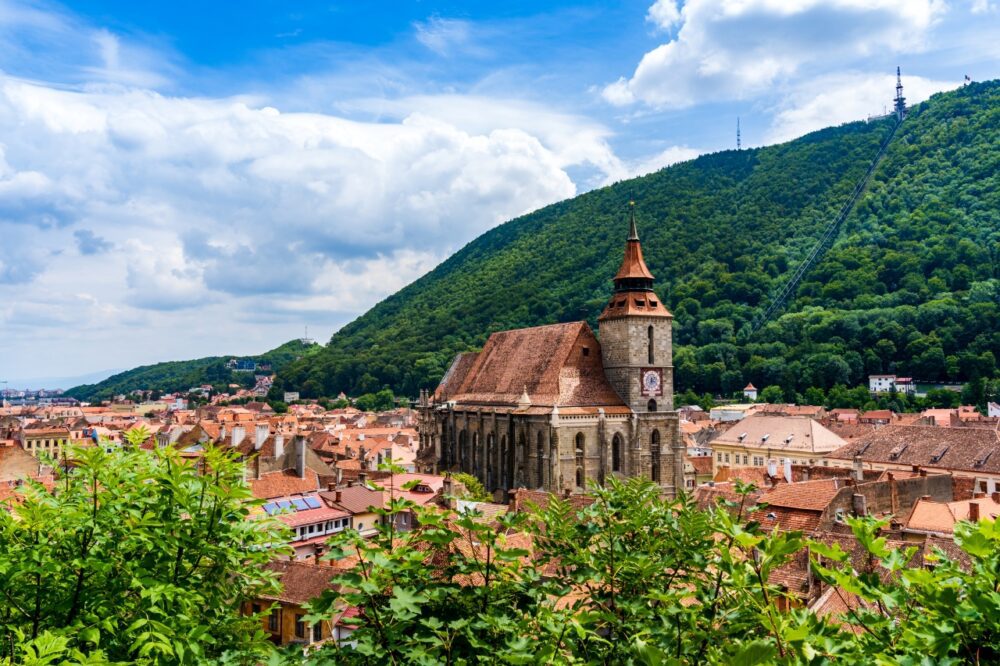
Is Brașov worth visiting? Without a doubt! The first time I visited Brașov, I was immediately enchanted by its storybook charm and stunning mountain backdrop. Nestled in the heart of Transylvania, Brașov feels like a place where history, nature, and culture come together seamlessly. Whether I was exploring the cobbled streets of the Old Town, hiking on Tampa Mountain, or snapping photos of the iconic Black Church, Brașov captured my heart from the moment I arrived.
Brașov is one of Romania’s most picturesque cities, known for its medieval architecture, Saxon influences, and proximity to the famous Bran Castle (often linked to the Dracula legend). Surrounded by the Carpathian Mountains, it’s the perfect mix of historic charm and natural beauty. The city’s highlights include the lively Council Square, the narrowest street in Europe (Rope Street), and a rich cultural heritage that dates back centuries. Add in its cosy restaurants, quirky boutiques, and easy access to outdoor adventures, and Brașov has everything you need for an unforgettable trip.
But is Brașov worth visiting for you? In this blog post, we’ll explore the top 10 reasons why Brașov should be on your travel list, from its fascinating history to its jaw-dropping scenery. Plus, we’ll share travel tips to help you make the most of your time in this magical Transylvanian city. Keep reading to find out why Brașov is one of Romania’s must-see destinations.
Table of Contents
Pros – Reasons You Should Visit Brașov
1. A Beautiful Medieval Old Town with Fairytale Charm
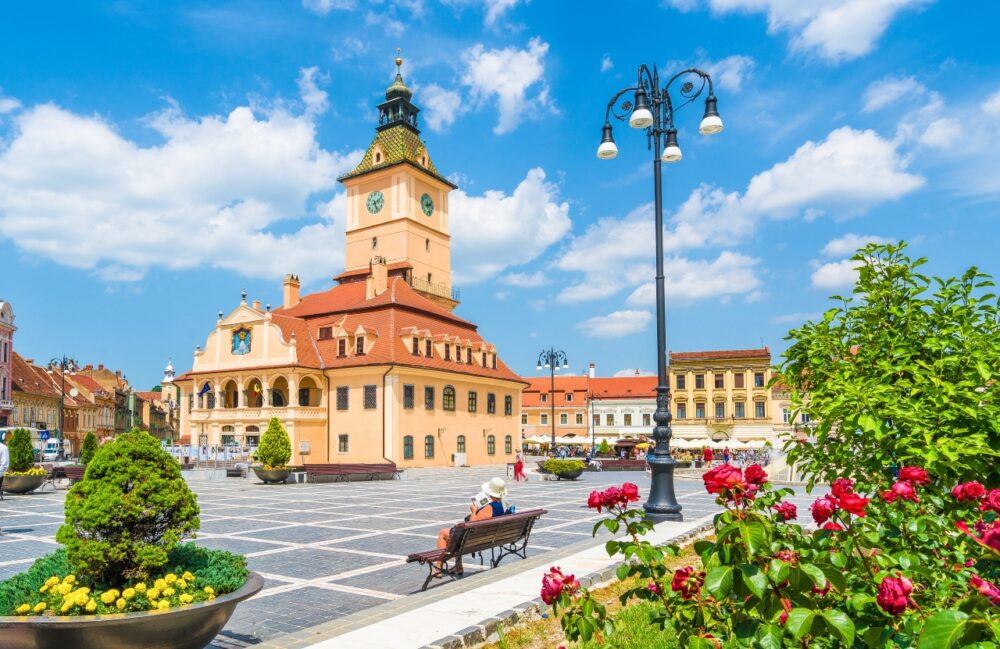
Brașov is one of Romania’s most picturesque cities, with a well-preserved medieval Old Town that looks like something out of a storybook. Surrounded by the Carpathian Mountains, its cobbled streets, pastel-coloured buildings, and historic squares create a magical atmosphere. Unlike some medieval towns that feel overly touristy, Brașov maintains an authentic charm, blending history with a lively, welcoming feel.
One of the highlights is Council Square (Piața Sfatului), the heart of the Old Town, where colourful Baroque buildings surround a beautiful 15th-century town hall. I spent hours wandering through the streets, admiring the elegant facades and stopping at small cafés for a coffee. The Black Church, the largest Gothic church in Romania, is another must-visit. Despite its dark, slightly weathered exterior, the interior is stunning, with a vast collection of Turkish carpets and one of the largest organs in Eastern Europe. Walking through the Old Town in the early morning, before the crowds arrived, was a particularly magical experience, with the rising sun casting a warm glow over the rooftops.
2. Stunning Mountain Scenery and Outdoor Activities
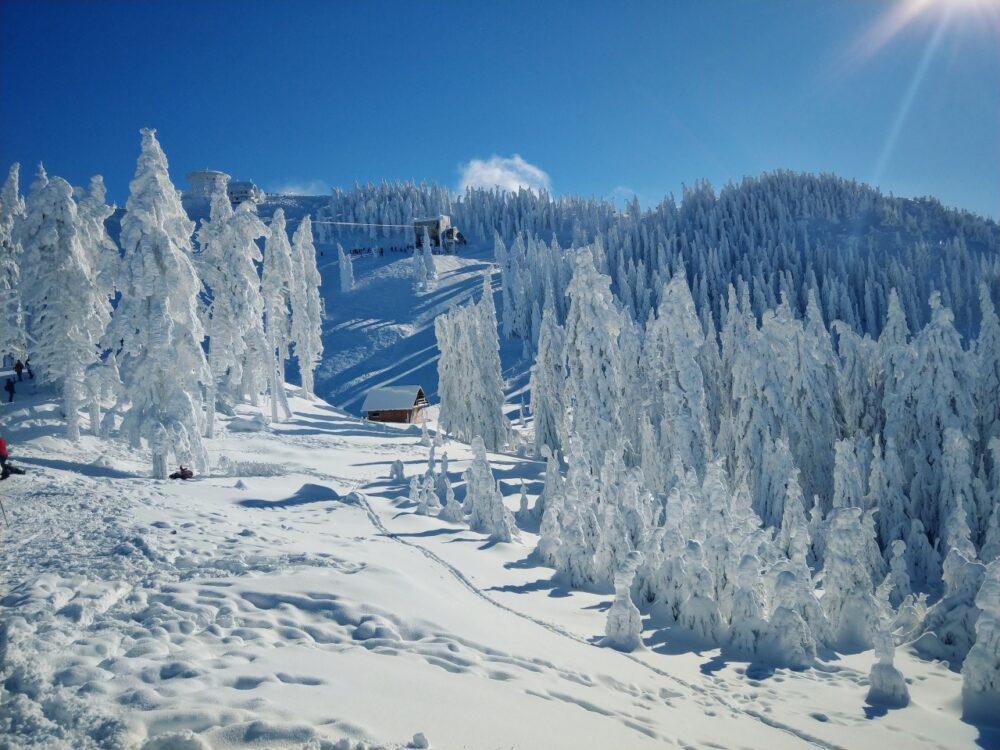
Brașov is surrounded by the Carpathian Mountains, making it an excellent destination for nature lovers. Whether you enjoy hiking, skiing, or simply taking in breathtaking views, the area offers plenty of outdoor activities for every season. The fresh mountain air and scenic landscapes provide a welcome contrast to the bustle of larger cities, making Brașov an ideal base for both adventure and relaxation.
One of the best experiences is taking the Tampa Mountain Cable Car, which offers a stunning view over the city and the surrounding countryside. I hiked to the summit instead, following a winding forest trail that led to an incredible panoramic viewpoint. In winter, the nearby ski resort of Poiana Brașov is one of the best places in Romania for skiing and snowboarding, offering well-maintained slopes and a charming alpine feel. Even if you’re not into winter sports, visiting the resort for a warm mulled wine while enjoying the snowy scenery is worth the trip.
3. Bran Castle and Other Fascinating Historical Sites Nearby
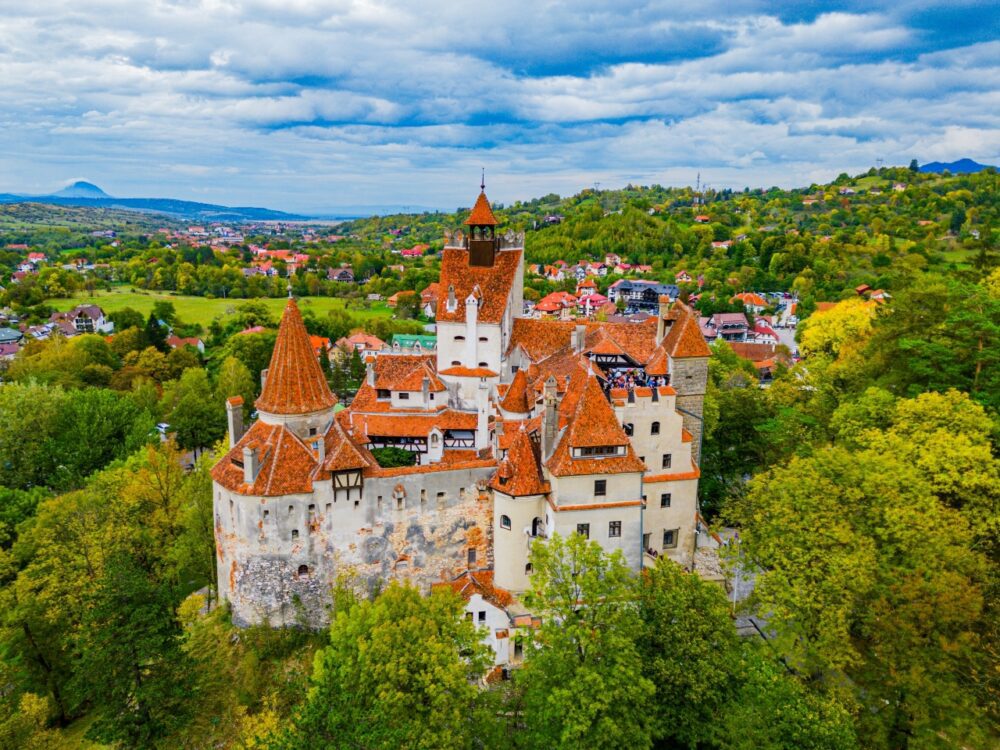
One of the biggest draws of Brașov is its proximity to Bran Castle, often linked to the legend of Dracula. While the connection to Vlad the Impaler (the historical figure behind Dracula) is largely fictional, the castle itself is undeniably atmospheric, with its dramatic hilltop location, narrow stone corridors, and hidden staircases.
I visited early in the morning to avoid the crowds, and walking through the castle’s dimly lit rooms, filled with medieval furniture and eerie decor, was an unforgettable experience. Whether or not you’re a fan of Dracula myths, the history of the castle and its role in Romanian heritage is fascinating. Beyond Bran, other historical sites like Râșnov Fortress, a medieval citadel perched on a hilltop, offer even more opportunities to explore Romania’s past. The fortress, originally built to protect locals from invaders, provides some of the best views in the region and is much quieter than Bran Castle, making it a great alternative for those looking to escape the crowds.
4. Affordable Prices Compared to Other European Destinations
One of the best things about visiting Brașov is that it remains an affordable destination compared to Western European cities. Accommodation, food, and activities are all reasonably priced, making it an excellent choice for travellers looking to experience a stunning medieval city without breaking the bank. Even in the heart of the Old Town, you can enjoy a great meal or a comfortable stay for much less than you would in more tourist-heavy destinations.
I was pleasantly surprised by how affordable everything was, from boutique hotels to traditional restaurants. A meal at a good local restaurant, including a hearty Romanian dish like sarmale (cabbage rolls stuffed with meat and rice) or mămăligă (cornmeal porridge similar to polenta), cost a fraction of what I’d pay in other European countries. Even entrance fees to attractions like Bran Castle and the Black Church were budget-friendly. Whether you’re travelling on a tight budget or just looking for good value, Brașov is a fantastic choice.
5. A Warm and Welcoming Atmosphere
Romanians are known for their hospitality, and Brașov is no exception. The locals are friendly, approachable, and always happy to share recommendations or tell stories about the city’s history. Unlike larger tourist destinations, Brașov retains a small-town feel, where people take the time to chat and make visitors feel welcome.
I experienced this firsthand when I stopped at a small bakery near Council Square to try cozonac (a traditional sweet bread filled with walnuts or chocolate). The elderly woman behind the counter not only recommended her favourite pastries but also took the time to explain the history of the shop and how her family had been baking in Brașov for generations. Small moments like this made my trip feel more personal and memorable. Whether at a family-run guesthouse or a tiny café tucked away in a quiet alley, the warmth of the locals adds to the city’s charm.
6. A Perfect Base for Exploring Transylvania
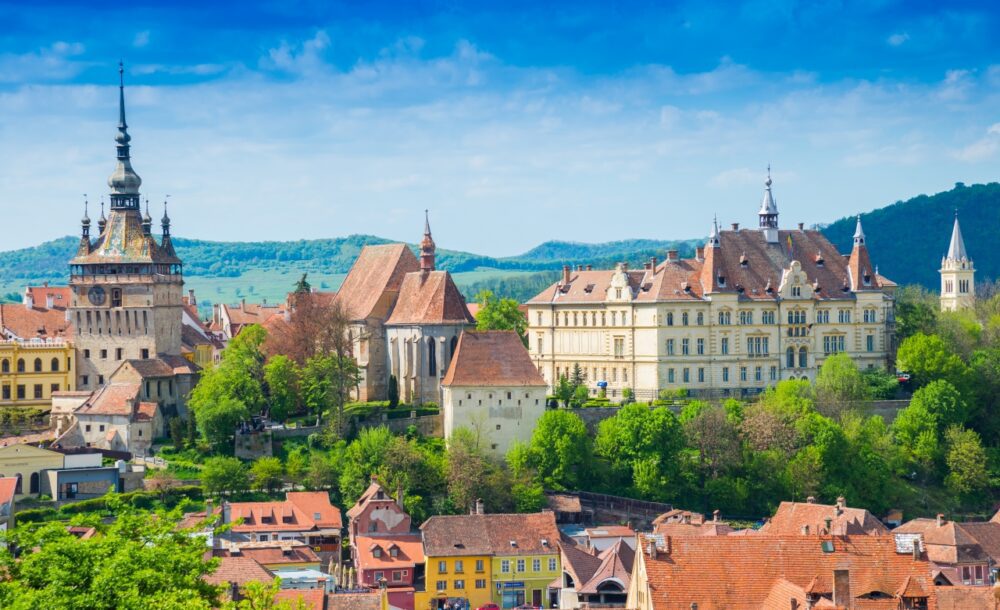
Brașov’s central location makes it an excellent base for exploring other parts of Transylvania. The region is packed with medieval castles, fortified churches, and charming Saxon villages, many of which are just a short drive or train ride away. Instead of constantly moving from place to place, you can stay in Brașov and take day trips to some of Romania’s most fascinating sights.
One of my favourite excursions was to Sighișoara, a beautifully preserved medieval town and the birthplace of Vlad the Impaler. Walking through its colourful streets, climbing the old clock tower, and visiting the house where Vlad was born felt like stepping into a different time. Another great trip was to Viscri, a traditional Saxon village known for its UNESCO-listed fortified church and its peaceful, untouched countryside. Both places were easy to reach from Brașov, and returning to the comfort of the city in the evening made the experience even better.
7. A Great Mix of History, Nature, and Relaxation
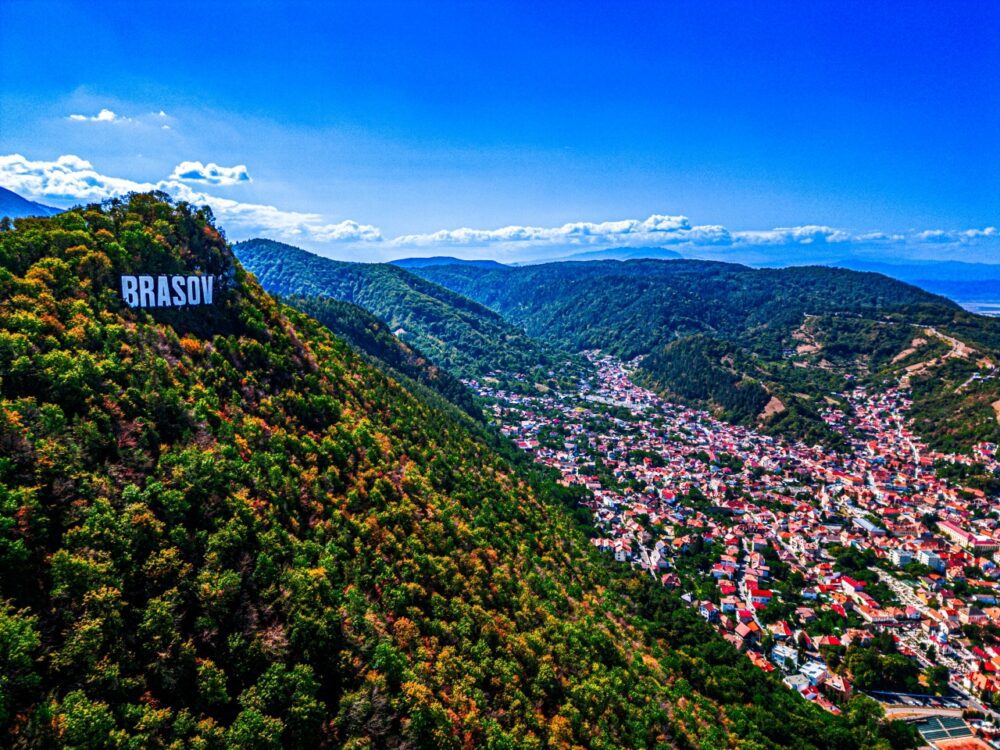
What makes Brașov such a great destination is its balance between history, nature, and relaxation. Unlike some places that feel too fast-paced or overly touristy, Brașov has a laid-back charm that allows you to explore at your own pace. Whether you want to dive into history, hike in the mountains, or simply enjoy a coffee in a quiet square, the city offers something for every type of traveller.
I loved how easy it was to switch between experiences. One morning, I was hiking up Tampa Mountain, surrounded by nature and fresh air. By the afternoon, I was back in the Old Town, enjoying a leisurely lunch with a view of the Black Church. In the evening, I found myself sipping Romanian wine at a cosy underground bar, listening to live music. The variety of things to do means that you never feel rushed or pressured to tick off a long list of sights—instead, you can soak up the atmosphere and enjoy the experience at your own pace.
Cons – Things to Consider When Visiting Brașov
1. The Weather Can Be Unpredictable and Cold for Much of the Year
Brașov’s location in the Carpathian Mountains means that the weather can be quite unpredictable, even during the warmer months. Winters are long and cold, with heavy snowfall and sub-zero temperatures, while spring and autumn can bring sudden temperature drops and unexpected rain showers. Even in summer, the evenings can be quite cool, so visitors expecting consistently warm weather might be surprised.
I visited Brașov in late May, expecting mild spring weather, but found myself caught in a sudden downpour that left the cobbled streets slick with rain. The next morning, the sun was shining, and the temperature had risen by nearly ten degrees. In winter, the snow-covered rooftops make the Old Town look magical, but the icy streets and freezing winds can make sightseeing less enjoyable. While the cold weather adds to the charm for some visitors, especially those coming for skiing, it’s important to pack appropriately. Layers, a waterproof jacket, and good walking shoes are essential no matter what time of year you visit.
2. The Old Town Can Feel Very Touristy at Times
Although Brașov is not as overrun with tourists as some other European destinations, its Old Town has become increasingly popular in recent years. During peak season, the main square and surrounding streets can feel quite commercialised, with restaurants, cafés, and souvenir shops catering mainly to visitors. While this is great for tourism, it can sometimes make it harder to find authentic local experiences, especially in the most visited areas.
I noticed this particularly in Council Square, where many restaurants had large English-language menus and staff standing outside trying to lure customers in. While the food was still good, some places felt more like tourist traps than authentic Romanian eateries. In the evenings, the Old Town remained lively, but the presence of large tour groups made certain areas feel busier than I had expected. To get a more local experience, I ventured into quieter streets outside the main tourist zones, where I found smaller, family-run restaurants and traditional bakeries that felt far more authentic. If you want to escape the crowds, it’s worth exploring beyond the central square.
3. Public Transport is Limited and Taxis Can Be Unreliable
While Brașov itself is compact and easy to explore on foot, getting to nearby attractions or other parts of the region without a car can be a challenge. Public transport options are limited, with buses running to some areas but not always on a frequent schedule. Train connections to other Romanian cities are available, but they can be slow and sometimes unreliable. Taxis and ride-sharing apps are an option, but taxi drivers in tourist areas have been known to overcharge unsuspecting visitors.
I experienced this firsthand when trying to visit Bran Castle. While buses run between Brașov and Bran, they don’t operate as frequently as in larger cities, and I had to wait nearly an hour for the next one. On another occasion, I took a taxi back from Poiana Brașov, only to realise I had been charged nearly double what a local would have paid. If you plan to take a taxi, always ask for the price in advance or use a reputable ride-hailing app to avoid overpaying. Renting a car can be a good alternative for those wanting to explore more of Transylvania, but driving on Romania’s mountain roads requires confidence and caution.
4. The Cobblestone Streets Can Be Slippery and Difficult to Walk On
Brașov’s medieval charm is one of its biggest draws, but the cobblestone streets that make the Old Town so picturesque can also be a challenge, especially for those with mobility issues. The uneven surfaces can be tricky to walk on, particularly after rain or snow, when they become slippery. Some of the streets leading up to scenic viewpoints, such as Tampa Mountain, can also be quite steep, requiring a reasonable level of fitness to navigate.
I found myself struggling with the cobbled streets after a light rain shower, as the polished stones became surprisingly slick. Walking through the Old Town was still enjoyable, but I had to take extra care on steeper sections. For those with mobility concerns, wearing comfortable, supportive shoes with good grip is essential. If you’re not up for the climb to Tampa Mountain, taking the cable car is a much easier way to enjoy the panoramic views without the effort of hiking up steep paths.
When to Visit Brașov
The best times to visit Brașov are spring (April to June) and autumn (September to October), when the weather is mild, and the surrounding Carpathian Mountains are alive with colour. Spring brings blooming wildflowers and fewer crowds, while autumn offers golden foliage and crisp air, perfect for exploring. Summer (July to August) is warm and ideal for hiking and outdoor activities, though it’s a busier season. Winters are magical, particularly for those who enjoy skiing at nearby Poiana Brașov or visiting the city’s Christmas markets.
How to Get to Brașov
The closest airport to Brașov is Henri Coandă International Airport (OTP) in Bucharest, approximately 170 kilometres away. From the airport, direct trains and buses connect to Brașov in about 3 hours, with trains offering the most scenic route. For those travelling from other parts of Romania or neighbouring countries, Brașov’s central train station provides excellent rail connections. Driving is another option, with well-maintained roads linking the city to Bucharest and other regional hubs.
Where to Stay in Brașov
Brașov offers a variety of accommodations catering to all budgets and preferences:
- Luxury: Historic Centre or Poiana Brașov – Stay near landmarks like the Black Church or enjoy mountain views. Options include Kronwell Brașov Hotel, offering upscale comfort, or Hotel Aro Palace, a five-star classic in the heart of the city.
- Mid-range: Schei or City Centre – Ideal for exploring Brașov’s old town. Consider Casa Wagner, a charming boutique hotel, or Hotel Bella Muzica, located steps from the main square.
- Budget: Train Station or Surrounding Neighbourhoods – Affordable choices like JugendStube Hostel or guesthouses in Schei District offer excellent value and local charm.
Getting Around Brașov
Brașov is compact, and walking is the best way to explore the historic centre, including sights like the Black Church, Council Square, and the Rope Street. For longer distances, the city’s RATBV public transport system, including buses and minibuses, is reliable and affordable, with tickets available at kiosks. Cycling is an option during warmer months, with bike rentals available for exploring the surrounding countryside. Taxis and ride-hailing apps like Bolt are widely used and reasonably priced, making them a good option for trips to Poiana Brașov or nearby attractions.
How Long to Spend in Brașov
Two to three days is ideal for experiencing Brașov’s highlights, including the Black Church, the charming old town, and a hike or cable car ride up Tampa Mountain for panoramic views. This timeframe allows time to explore nearby attractions like Bran Castle, often associated with Dracula, and Râșnov Fortress, both just a short drive away. With an extra day, consider a trip to Poiana Brașov for outdoor activities or explore the scenic trails of the Piatra Craiului National Park. Brașov’s mix of medieval charm, mountain scenery, and cultural richness makes it a must-visit in Romania.
Conclusion
So, is Brașov worth visiting? Absolutely! With its charming medieval Old Town, stunning mountain views, and proximity to iconic attractions like Bran Castle, Brașov is one of Romania’s most enchanting destinations. Highlights like the Black Church, Rope Street, and the vibrant Council Square make it a joy to explore. While it can get busy during peak tourist season, its magical atmosphere and access to outdoor activities make it well worth the visit. If you’re ready to experience the beauty of Transylvania, start planning your trip to Brașov today—you’ll be swept off your feet!
